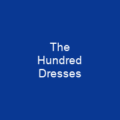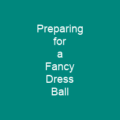What is a Dress?
A dress is more than just an outer garment—it’s a canvas for self-expression, a reflection of history and culture, and a symbol of societal norms and changes over time. Imagine a dress as the ultimate chameleon, adapting to different eras like a chameleon changing its skin color.
Historical Dress Styles
From the loose tunics worn in the 11th century to the intricate designs of the 20th century, dresses have undergone a remarkable transformation. Have you ever wondered how women dressed during the Renaissance or the Victorian era? The styles were as diverse and complex as the stories they told.
Loose Tunics and Tunic Dresses
In the 11th century, women wore loose garments similar to men’s tunics. These early dresses were simple yet elegant, much like a blank page waiting for its first words. Could you imagine wearing such a dress today? It would be quite a conversation starter!
Cote-hardies and Houppelandes
As we move into the 16th century, dresses became more elaborate with cote-hardies featuring decorative elements like tippets. Houppelandes were also popular, known for their full-cut designs and sleeves. These garments were not just worn; they were a statement of wealth and status.
Farthingales and Ropa
The ropa style was a significant development in dress history, popularized across Europe. From Italy’s sumarra to France’s marlotte and Holland’s vlieger, these dresses showcased the creativity and innovation of the time. How would you feel wearing one of these historical dresses? Would it be more like stepping into a painting or a living museum?
Foundation Garments
Foundation garments such as corsets, petticoats, and panniers played crucial roles in achieving desired silhouettes. From the 1550s onwards, middle- and upper-class European women had a range of options to choose from. The farthingale style was rigid and conical, while the looser-style gown known as a ropa offered more freedom.
Decorative Elements
Fashionable sleeves were often fitted with puffs at the shoulder, adding an extra layer of elegance to the dress. The conical skirt shape was replaced by wider, more conical wheel farthingales under Queen Elizabeth’s rule. These changes not only reflected fashion trends but also social and political climates.
17th Century Fashion
The 17th century saw large triangular silhouettes favored in dress design. One-piece gowns remained popular until the middle of the century, supported by hoop underskirts. The robe à la française was a hallmark of French fashion between 1740 and 1770. After the French Revolution, the Empire style became fashionable, favoring simplicity and elegance.
Victorian Era
The Victorian era brought tight-fitting dresses decorated with pleats, rouching, and frills. Women involved in dress reform found themselves at the center of attention, both positive and negative. By 1881, the Rational Dress Society had formed as a reaction to restrictive fashion.
20th Century Fashion
The early 20th century saw the introduction of the Gibson Girl look with corseted waists and an s-shaped silhouette. The Edwardian era brought the ‘pigeon breast’ look, while the straighter silhouette became popular by 1910. Women called their dresses “waists” if one-piece or “shirtwaists” if they consisted of a skirt and blouse.
Popular Styles
French designer Paul Poiret had a significant impact on fashion, introducing new styles that were both innovative and influential. The straighter silhouette became popular by 1910, with designs developed by Poiret available in boutiques and department stores.
Modern Dress
Today, dresses come in various forms—basic dark-colored dresses, bodycon dresses, party dresses, and more. During World War II, dresses became slimmer and inspired by military uniforms. Christian Dior’s New Look was influential from 1947 to 1957. Since the 1970s, no single dress type has dominated fashion for long.
Conclusion
A dress is a timeless piece of clothing that tells stories of history and culture. From the loose tunics of the 11th century to the modern bodycon dresses, each era has its unique style and significance. As we continue to evolve, so too will our understanding and appreciation of this versatile garment.

You want to know more about Dress?
This page is based on the article Dress published in Wikipedia (retrieved on January 27, 2025) and was automatically summarized using artificial intelligence.






